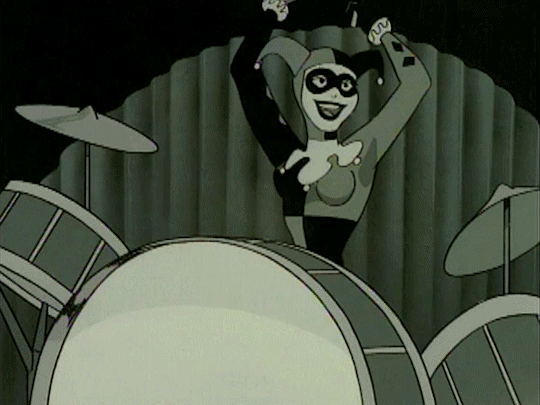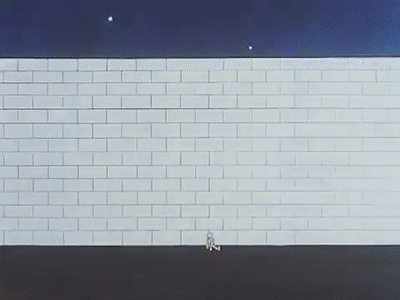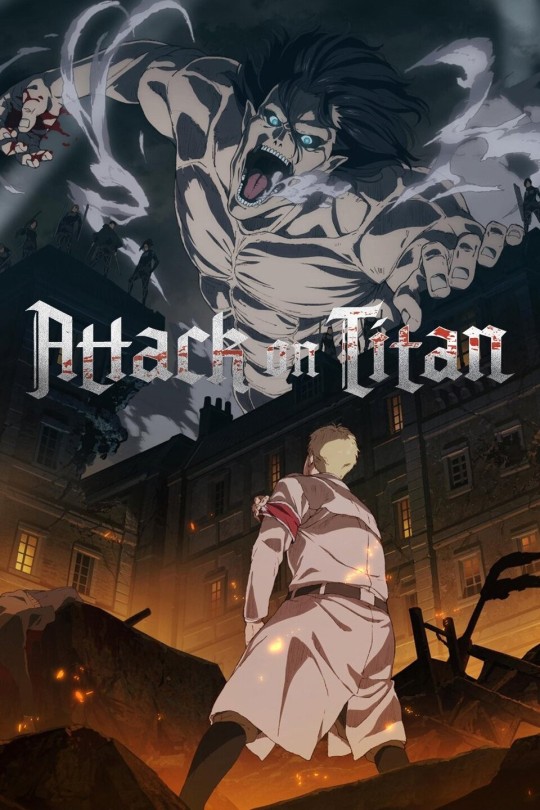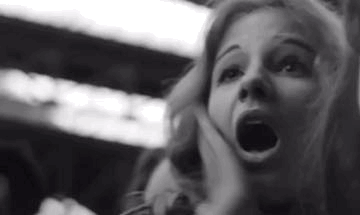#Ideological State Apparatuses
Explore tagged Tumblr posts
Text
The Institutional Engineering of Intellectual Decline – part 2
Having traversed the origins and mechanisms of institutional design through the disciplinary architectures of education, surveillance, and normative enforcement, we now enter a deeper register in the anatomy of institutional power, the moment when institutions not only constrain but actively reprogram thought itself. Photo by KATRIN BOLOVTSOVA on Pexels.com This Part II transitions from…

View On WordPress
#anti-institutionalism#autonomy in learning#bureaucratisation of knowledge#Cognitive Capitalism#cognitive conformity#critical pedagogy#critical theory#dehumanisation#deschooling#disciplinary power#education theory#educational transformation#epistemic injustice#freedom of thought#humanistic decay#ideological state apparatuses#institutional control#institutional critique#intelligence suppression#knowledge systems#obedience training#Philosophy#politics#post-industrial society#radical epistemology#Raffaello Palandri#society#Sociology#surveillance capitalism#university critique
2 notes
·
View notes
Text
commies are catching strays over calling Biden fascist. Biden is a liberal, fascism is a political ideology, etc.
the commie line on fascism is that it is capitalism in crisis and the capitalist use the weight of the state and markets to bring working class to heel to quick fix the economy.
We see this with Biden busting the rail strike, the never ending waves of layoffs which coincide with increased interest in unionization, states legalizing & encouraging child labor, the rise in prison labor, the contradiction between the necessity of undocumented labor and build the wall — which as we’ve seen multiple times over recently Biden has the same line on this as far rightists (“he was an illegal”; offering to build the wall and other border measures per republican doctrine). the economy is booming according to gdp (the capitalist measuring stick of economic success) but nobody can afford groceries.
the genocide in gaza is a manifestation of this as well. much has been written on israel and the us not having a game plan. there’s no strategic victory just death and destruction for its own sake. all while weapons manufacturers get paid.
the proxy war with russia and posturing toward china hints to this as well; both challengers in some way to us imperialism. But we see the weakness exposed bc the comedian president who used to get gold saucers is now begging for scraps. can’t fund ukraine an israel infinitely.
yemen and ansarallah also expose how stretched the empire is when it seized 3 ships back in october, along with the hilarious fallout of the initial phase of prosperity guardian and the fact that the us has yet to open the red sea.
and insofar as liberalism is opposed to fascism… well we won’t look too closely at the transfer of power in Germany say around january 1933. nor how obama expanded repressive state apparatuses like surveillance, militarized police, unilateral presidential powers, setting a public precedent of extrajudicially killing us citizens and handing it off peacefully to trump, who is evidently a unique existential threat to democracy. nor how in every fascist regime the liberals, who are capitalists, sell out the commies, who are anti capitalists, to the fascists, who are capitalists.
26 notes
·
View notes
Note
hi! i just finished st joan by shaw, and as someone who’s a fan of both shaw and brecht (iirc), i was wondering if you had any thoughts on shaw’s st joan and brecht’s st joan of the stockyards as contemporaneous pieces?
Hello friend!!! As you know, I found this ask so exciting I went and read both of these plays (it took me a little while; I’ll blame having to uproot my life suddenly and move to Florida haha).
As to their status as contemporaneous pieces, I do find it interesting that both Shaw and Brecht clearly had strong feelings about the then-recent canonization of Joan of Arc in 1920. To give Shaw an amount of credit, premiering a play in 1923 which criticizes the hypocrisy of the Catholic church’s canonization of Joan while maintaining similar attitudes and hierarchical systems of power which caused her execution to begin with was probably a bit more groundbreaking than it reads now. With that said, I’m not sure I’d consider Shaw’s play… particularly good. Which is a shame; one of my favorite things about Shaw is probably his female characters, but Joan, as the only one in the whole play, is portrayed as kind of… banal. Like, she’s perfect, she’s God’s favored, etc. but she doesn’t seem to have much of an issue with social or clerical systems of power at large except for insofar as they obstruct her goals to defeat England. Glancing through the Wikipedia page for the play, I really enjoyed T.S. Eliot’s criticism “instead of the saint or the strumpet of the legends to which he objects, he has turned her into a great middle-class reformer” (“A Commentary,” 1924). This isn’t necessarily Surprising, since Shaw’s political/social commentary is incredibly hit or miss, but I found the repetition and one-dimensionality of Joan and her struggles sort of a drag by the time I reached the second half of the play. ALSO… I found the epilogue extremely gauche and bizarre, it really did not fit with the piece and was kind of lip-curlingly tacky lmao.
BRECHT <3 I know you’re shocked to hear this but tumblr user brechtian really really really enjoyed Brecht’s Saint Joan. I mean, it’s really Brecht doing what he does best, which is taking a seed of a preexisting story and transforming it into brilliant complex class commentary. I was hoping going into it that there’d be criticism of the role the church plays in maintaining capitalism and BOY was I not disappointed. Literally the relationship between ideological and coercive state apparatuses, the critique of neoliberal nonviolence, skepticism of the reformed bourgeois + the difficulty of genuinely relinquishing that status within a system that necessitates power inequality SHE HAS IT ALL! Brecht also having the guts to actually have Joan lose her religious faith by the end (quite literally disco elysium voice communism replaces a faith in the divine with a faith in humanity’s future…) makes the empty propping up of her name and legacy as a symbol for the continuation of the status quo at the end sooo much more effective than Shaw’s cheesy fucking epilogue. In short, everything I’d want from a communist chicago stockyard loose adaptation of Joan d’Arc’s life because it has teeth it has claws it has BITE! I fear comparing the two is really coughing baby wealthy democratic socialist vs communist hydrogen bomb
#ALSO forgot to mention Joan’s crisis of faith as it were is soo effective when it’s hunger and poverty driving her to desperation#Zoe#psychopompian#THANKS FOR SENDING THIS TO BEGIN WITH!!!!#I do in general consider myself a shaw enjoyer but the range of that enjoyment is so drastic like unfortunately it’s not all candida and#heartbreak house lmao#bertolt brecht#saint Joan of the stockyards#saint Joan#Bernard shaw#asks#theatre#brecht
7 notes
·
View notes
Text
Reading Notes 1: Marx and Engels to Althusser to Benjamin

In “The Ruling Class and The Ruling Ideas,” “Ideology and Ideological State Apparatuses,” and “The Work of Art in the Age of Mechanical Reproduction,” Karl Marx and Frederick Engels, Louis Althusser, and Walter Benjamin, respectively, provide insight on our introduction to ideology and culturalism.
What is the division of mental and material labour and how does it manifest in society?
What is the relationship between the state apparatus and the ideological state apparatuses?
How have the processes of reproducing works of art changed over time, and how have changes in reproduction altered the relationship between a piece of art and its “original” object?
@theuncannyprofessoro
20 notes
·
View notes
Text

345 (more) days in America
CELEBRATING STRUCTURALISM (at work and on the road)
Althusser would love this. Note the yellow "STATE" sign peeking from the bottom. A perfect caution against ideological state apparatuses.
#my stuff#the phenomenology of the spirit of america#Althusser#Structuralism#ideological state apparatus
3 notes
·
View notes
Text
Discussion Leader Panel Presentations
Pink Floyd: Nothing but the Machine

Young students run around causing a ruckus, complaining about their evil teacher who traps them with the masses. Being a hundred times the size of the students who are ants in comparison, the teacher has an easy time putting the kids into the roof of a standard British home that appears to be a funnel and are turned into spaghetti as he watches through his glasses where one lens enlarges into a magnifying glass. The students' lack of individuality reigns supreme in Pink Floyd’s, “Another Brick in the Wall, Part Two,” they are just another noodle. In “The Ruling Class and The Ruling Ideas,” Karl Marx and Friedrich Engels make the point that the ruling class, the teachers, control the means of material and mental labor, which is divided for one half to appear as thinkers while the other stays passive and grounded in reality. This allows for one class to rule all just like a teacher runs a classroom in 1970s England (Pg. 59-60). Marx and Engels discuss how ideas are not independent of politics, just as music and art are intertwined with politics. Pink Floyd were one of the most influential bands to criticize the education system and how teachers back then put kids in a box as seen in the imagery of a white brick wall encasing a student sitting on the dirt ground. In “Ideology and Ideological State Apparatuses,” Louis Althusser writes:
“School (but also other State institutions like the Church, or other apparatuses like the Army) teaches ‘knowhow’, but in forms which ensure subjection to the ruling ideology or the mastery of its ‘practice’. ‘professionals of ideology’ (Marx), – the tasks of the exploited (the proletarians), of the exploiters (the capitalists), of the exploiters’ auxiliaries (the managers), or of the high priests of the ruling ideology (its ‘functionaries’), etc” (Pg.88).

Pink Floyd paints a picture of the ruling class quite literally trapping a child inside a brick wall by the high priest Althusser speaks of, the teacher. Keeping the youth trapped without hope of living their dreams only will force them into the wall of never contradicting their superiors and never accomplishing anything. Instead, the children will end up in the workforce where they will be miserable.

The sad reality is presented in the shot of silver hammers with red and black handles marching like the military in a dark and cloudy night. Each hammer represents a different child who the high priests trapped into our established system, even if that means the children are unhappy because they grew up to work meaningless jobs. Pink Floyd, Marx, Engels and Althusser all agree that the system's hierarchy is oppressive as the ruling class subjects everyone else into a working majority that builds the infrastructure that keeps the upper class afloat and in power. It's a cycle where the high priests manipulate the children to be the same as everyone else so they stay and grow up to work the same jobs as their parents just like their own kids will.
Thom Yorke and the Aura of Surrealism
vimeo
Thom Yorke from Radiohead and The Smile made a solo album titled “Anima” and a short film with Paul Thomas Anderson of the same title to go along with it. The film features the songs, “Not the News,” “Traffic” and “Dawn Chorus.” In Walter Benjamin's essay, "The Work of Art in the Age of Mechanical Reproduction," he discussed mechanical reproduction and how it depleted the uniqueness of works of art, writing “even the most perfect reproduction of a work of art is lacking in one element: its presence in time and space, its unique existence at the place where it happens to be” (Pg. 667). Thom Yorke is one of the few modern musicians who proves Benjamin's critique of artistic authenticity wrong. “Anima” exists outside of time and space. Benjamin’s comments on retakes in film and music is that it depletes the aura of the piece. Maybe multiple takes does make a work of art less organic, but Paul Thomas Anderson’s direction appears natural in its own right as the film begins with a location all too familiar for many people, the train.

To perfect something, or rather to record something numerous times can only benefit the artwork at hand, but that's just my opinion. Benjamin does speak on the meaning of aura relating to authenticity and Yorke and Anderson show the inside of a subway where everyone is wearing the same coat and flips it over with a choreographed dance sequence of each person moving their body in a bizarre lifeless way. Yorke and Anderson make their point that authenticity and surrealism can go hand and hand.

After the dance sequence, Thom Yorke picks up a woman's briefcase and proceeds to exit the train to give it back to her. Instead, he loses her and wanders around in a dream-like dystopian world. He is searching for answers but nothing is received. There's a point where he tries to exit the station but the turnstile won't move. The same people in identical trench coats continue to walk through the turnstile right next to him, but his still won't budge. The audience is left to ponder the question of what it meant. This is exactly what I want out of art, displaying an ambiguous critique of society. Art becomes repetitive when the answers are given to the viewer instead of the filmmakers forcing the audience to think critically about the film and its meaning. Thom Yorke and Paul Thomas Anderson let the viewer experience a dream-like state so they can apply it to an everyday event such as taking the train to work. Yorke and Anderson are breaking the laws of time and space in the film with surreal imaginary and bizarre and striking choreography. “Anima” created its own aura that is not aligned with the idea that a piece needs to be viewed in a specific way or the authenticity will be lost. The authenticity of “Anima” is its unique and uncanny perspective on reality. Maybe Walter Benjamin wouldn’t mind retakes if films were as inventive as “Anima.”
Critical Thinking Questions
According to Marx and Engels, ideas are not independent from politics. Do you think art and politics should be grouped together or can the two be separate?
Is Pink Floyd’s “Another Brick in the Wall, Part Two” overly cynical towards capitalism that's perpetuated by what Althusser describes as “high priests,” or is it justified?
Do you agree with Walter Benjamin's opinion that retakes deplete the aura of films?
Marx, Karl. Marx and Engels Collected Works Volume 5: Marx and Engels 1845-47. Lawrence & Wishart Limited, 1976.
Sharma, Aradhana, and Akhil Gupta. The anthropology of the state: A reader. Oxford, UK: Blackwell Publishing, 2006.
Braudy, Leo, and Marshall Cohen. Film theory and criticism: Introductory readings. New York: Oxford University Press, 2009.
9 notes
·
View notes
Text
should i use the work printer to print out ideology and idealogical state apparatuses even though it’s 52 pages i think Louis Althusser would want me to
2 notes
·
View notes
Text
“Today, more than ever, we have to confront not only the bourgeoisie’s apparatuses of political coercion but also the mechanisms and institutions present in civil society that generate a broad acceptance of the capitalist social order. The capitalist elites tend to achieve a significant hegemony over important popular sectors, a real cultural leadership over society; they have the capacity to ideologically subordinate the popular sectors, even those who are exploited by them. As Chomsky says, propaganda is to bourgeois democracy what the truncheon is to the totalitarian state.
—Marta Harnecker, “Ideas for Struggle,” translated by Federico Fuentes, 1st ed. 2004, revised and updated 2016
2 notes
·
View notes
Text
The Institutional Engineering of Intellectual Decline - part 1
The crisis of intelligence in the twenty-first century is not a symptom of cultural decadence, nor is it the unintended side-effect of mass distraction or technological overstimulation. Photo by Pixabay on Pexels.com Rather, it is the result of an infrastructural programme, a deliberate and systemic engineering of epistemic constraints embedded into the very fabric of contemporary institutions.…

View On WordPress
#anti-institutionalism#autonomy in learning#bureaucratisation of knowledge#Cognitive Capitalism#cognitive conformity#critical pedagogy#critical theory#dehumanisation#deschooling#disciplinary power#education theory#educational transformation#epistemic injustice#freedom of thought#humanistic decay#ideological state apparatuses#institutional control#institutional critique#intelligence suppression#knowledge systems#obedience training#Philosophy#politics#post-industrial society#radical epistemology#Raffaello Palandri#surveillance capitalism#university critique
3 notes
·
View notes
Note
recommend some social science / political philosophy books
oh wow ok. i do better with number limits. one is sloterdijk's rage and time, fascinating writing on emotions that are pivotal to history. second would be althusser's ideological state apparatuses. his view is pessimistic but also enlightening on a micro level. tiqqun essays are very similar, young girl, bloom, etc. fourth, girard, violence and the sacred. religious studies territory. i recently read mannerphantasien and loved the second volume. also loved all agamben i've read. haraway's writings on oncomouse etc. are truly political..
12 notes
·
View notes
Text
Answer to this comment by vermilionstarlight:
@antisemitism-eu do you truly think the conflict would end if Hamas released all Israeli hostages? Not that they shouldn't, they VERY MUCH should, but an end to the war wouldn't result from that. The rhetoric being spewed forth from Israel's state and military apparatuses is very clearly antagonistic & fascist, just as much as Hamas rhetoric. In spite of the right to safety and autonomy held by Israelis and Palestinians, the fascists have the guns & money on both ends. This isn't anything specific to Israel or Hamas, every government in the world is run by some mixture of incompetence, hatred, greed, and jealousy. Especially so with fascist governments, which I would qualify the state leaders of Israel as, given their observed word and action. No intent to be antagonistic toward you either, btw :3 I'm posing a question primarily, because I don't think ending conflict is as simple as dismantling Hamas. There is ignorant hatred on both sides of this horror, and there are greedy and spiteful leaders spearheading on either end. People have been lied to and manipulated to see atrocities as miracles, on both ends. Hamas is a piece of the puzzle, but people will be spiteful even without Hamas.
I said that the war would end when Hamas surrenders and releases all the hostages.
Every time you say sometime about Hamas, try to pretend we're talking about American White Supremacists, and see if what you say makes sense.
For example: The White Supremacists murdered, raped and abducted Jews. The minute they return the abducted Jews there will be peace.
That doesn't make any sense, does it?
As for the rest of your answer: You're accusing Israel of being Nazis and comparing them to Hamas.
I could answer point by point, but it's very hard for me to talk to somebody who's so antisemitic and yet so clueless about it.
As I said, try to replace "Hamas" with "white supremacists" and see if you still think the same. Now, let's try this: Imagine that in the US there's a community of White Supremacists. They teach their children to murder Jews, they cheer and celebrate every time a Jew is murdered. There's a big statue in every square and plaza, commemorating the successful murder of American Jews. They honor Jew-murderers and pay them a considerable sum every month they spend in jail for their crimes.
In fact, they pay so much money, that the US government helps them out with basic infrastructure, because we wouldn't want them to suffer. When the card-carrying members of this White Supremacist group go on a rampage in a Jewish neighborhood - murdering, raping, torturing, maiming - they are joined by thousands from their community who throng the streets to celebrate and spit on Jewish bodies. They also chop off heads from bodies, so they can remember that great day. They then announce they would do it again and again, until the US is free of Jews No, the conflict will not end when you dismantle the official group.
The entire community needs to be deradicalized
But that's the first step. It's a necessary step. You don't give the community autonomy, expecting them to learn their lesson and become good, productive citizens.
You don't bring in another White Supremacist group
You don't believe a word they say
You don't expect any self-respecting body to condemn the Feds when they go into this community.
You stand by the victims, not by their murderers and rapists.
You don't say describe the White Supremacist community as being "spiteful".
No, the conflict will not end when Hamas surrenders
But THE WAR will end.
This might be shocking to some people, but the reason Israeli soldiers are shooting in Gaza, is because they are being shot at, and because Gazans are still firing rockets, trying to murder Jews.
Nazi ideology is still alive and well. Does that mean that the US should not have dismantled the Nazi state?
Because that's what Israelis and Jews are being told now.
3 notes
·
View notes
Text
The Price of Freedom: Deconstructing Ideologies in Attack on Titan

https://drive.google.com/file/d/1EUdSXvMVHqfWuosnvoQdS3ce24Xgza3k/view?usp=sharing
Attack on Titan (2013-2023) is an anime based on the manga of the same name by Hajime Isayama that follows main character Eren Yeager as joins humanity’s fight against what is seemingly their greatest threat: the Titans.
To understand the way power is depicted in Attack on Titan, I employ the theories of French philosopher Louis Althusser[1] and his thoughts on how structures of ideology and state apparatus assign and take power from individuals. I argue that one of the most vicious examples of ideology is depicted in later half of the show through the military’s manipulation of the Warrior Unit, and Althusser’s work “Ideology and Ideological State Apparatuses” can be used to help explain how Marley has managed to subjugate the Eldians in Marley and use them as weapons against their enemies. Althusser believes that for a state to maintain power it must “produce” ideologies to convince its people to stay in the position that they inhabit, to maintain order. Althusser describes ideology as “our imaginary relationship to real conditions,” and states that our perception of the world around us is not exactly our experience, but ideology that tells us we are free to recognize such things. Season 4 sees an introduction to Marley, a militarized state that maintains order through force — Repressive State Apparatuses (RSAs) — and indoctrination — Ideological State Apparatuses, (ISAs). These combined forces work to subjugate and manipulate the Eldians in Marley and convince them their enemies are the “devils” of Paradis, not the state of Marley repressing them. Isayama’s dedication to detail in his worldbuilding of the “multiple worlds' ' within the show is the foundation for characters that exist in completely different positions of power which in turn, reveal more about the world and humanity itself. The change in perspective in the beginning of Season 4 of the show allows the audience to understand the themes of the show from a completely different perspective and add nuance to characters originally thought to be villains.
Season 4 of Attack on Titan introduces the audience to Marley, the oppressive and colonial empire across the ocean from Paradis, and while the nation itself is perceived to be the Eren and the Survey Corps’ enemies, the show uses the narrative of the oppressed Eldians to show the complexity behind the supposed enemy and that the question of freedom is not one so easily answered. While the audience is used to the military and political world within the walls, in Season 4 we get to understand the military workings of Marley and their struggle to maintain their power using the Titans. While other nations like the Mid-East Forces have been working on technology and weapons to surpass titan power, Marley has only been focusing on Titans as the main source of their power. Now that the rest of humanity has caught up and is now exceeding such power, Marley faces an inevitable loss. To combat this, in Episode 61 “Midnight Train” Zeke (current Beast Titan) proposes an idea to resume the operation from Season 2 to capture the Founding Titan, as that would cement Marley as the possessor of all Titan power. While Zeke is Eldian, he is considered more important to Marley’s military due to his strength as the Beast Titan and his political knowledge. What I think is interesting about Marley’s use of the Titan power is that it must rely on the exploitation of Eldians, as they are the only ones who can turn into titans. While the average non-shapeshifting Eldian lives in specific zones within Marley, if you volunteer to be a part of Marley’s military, you are treated with slightly more respect because of the value you bring to the state. While this might not directly tie to Althusser’s example of policing in his paper, it does function in the same way that it is a militarized force in that they ensure compliance from the Eldians through violence. Just for background, volunteering to be a Titan shapeshifter is not an easy choice to make. If it were, then majority of the Eldians would be. Titan power limits the users lifespan to 13 years after they have gained it, and essentially devotes the Eldian’s life to fighting for the state that has subjugated and discriminated against their people for years. Marley’s military instates order by policing the Eldians within Marley and capitalizing off Eldian’s ability to turn into weapons for their own colonial practices.
In Episode 60, titled “The Other Side of the Sea,” the audience meets the Warrior Unit, a unit of the Marlyean military group that consists of Eldians trained to inherit titans and fight for Marley’s military as they battle over land with surrounding nations. I will focus on the children who are candidates to be the apart of the next generation of the Warrior Unit, specifically Gabi. Gabi is a passionate and strong girl whose main goal is to inherit the Armored Titan from her cousin who is the current Armored Titan, Reiner Braun. We meet the Warrior candidates who are in the middle of a territorial battle with another nation, and Gabi exclaims that to win this battle would prove to Commander Magath that she is the right choice to inherit the Armored Titan. Amidst the battle, Gabi explains to her fellow, less convinced peers that, “To shoulder the fate of us Eldians…and to slaughter that island of devils who’ve done nothing but make us suffer. (5:41-5:48). Here we see the impact of Marley’s indoctrination, depicted through the word “devil” in referring to people of Eldian descent. Even though Gabi is Eldian herself, she uses the word to refer to the Eldians on Paradis, who are the characters the viewers have been following since the beginning of the show. Her hatred of the Eldians is not due to her own experiences with them, but due to the discriminatory ideology perpetuated by the Marlyean government that they use to justify their treatment of Eldians and to maintain power over them. Gabi’s dialogue throughout the show reveals the intense amounts of indoctrination she has experienced, as she feels she needs to prove to Marley that not only is she a “good Eldian” but there are other “good Eldians” out there (5:48-6:02). Here we see her dedication to excel within a militarized system that only wants her for her titan abilities, displaying how the state perpetuates its ideologies onto its citizens.
By applying Althusser’s theories of RSAs and ISAs to Marley’s military forces and practices, the audience can understand other Eldian experiences, not just the Eldians in Paradis. Marley’s indoctrination has convinced Eldians in Marley to view the Eldians in Paradis as the reason for their treatment, while the characters who were perceived to be the villains of Season 2 (Eldians from Marley masquerading as Scouts): Bertholdt, Annie and Reiner, are nuanced due to the reveal that they were essentially manipulated to begin the attack from the first episode and to betray the Scouts. Isayama’s worldbuilding and depiction of power structures not only adds nuance to characters but displays the true dangers of state power.
[1] Althusser. “Ideology and Ideological State Apparatuses (Notes towards an Investigation)” 9, no. 1 (2006).
@theuncannyprofessoro
3 notes
·
View notes
Text
Reading Notes 1: Marx and Engels, Althusser, Benjamin
When we think of division of labor, we are typically thinking of the division of material labor specifically. The notion that there’s a proletariat or working class who work for the bourgeoisie and earn from wages, while the bourgeoisie or ruling class controls, and earns from the control, of the means of production. Marx and Engels argue that this division of material labor also lends itself to the division of mental labor. The ruling class creates the ideologies that govern society as a whole. It’s important to note that these ideologies don’t exist independently and are specifically designed to keep the working class docile and legitimize the current ruling class. This often comes subtly in the form of everyday media. Specifically right now in the United States I think of the general values of self-determination or the “grind”, often suggesting that people who aren’t successful simply aren’t working hard enough.
Althusser claims that the State Apparatus is more accurately a Repressive State Apparatus that functions by violence and repression. This includes things like the government, army, police, courts, and prisons, all of which are public, and ultimately form a single entity. Alongside the RSA are the Ideological State Apparatuses, including the religious, educational, political, communications, and cultural ISAs. When we say educational ideological state apparatus for example, we refer to both public and private education systems. The cultural ISA would refer to everything literature, art, sports, etc. In contrast with the RSA, ISAs are often private, and most importantly, function by ideology as opposed to violence. Althusser notes that beyond all ruling by ideology, ISA’s are more specifically united in that their ideologies all ultimately fall under the ruling ideology. Thus, despite their differences, both the Repressive State Apparatus and Ideological State Apparatuses ultimately work together to achieve the same end of maintaining the status quo and reproducing the same class inequalities.
For most of our history, art has been replicable, but only in the sense that an artist could try their best to imitate an original work, like an apprentice learning from their teacher. There were bound to be differences. Much of what gives a work of art its value is its singularity. Being from one specific artist from one specific time and place, and with only one existing. However, through various technological innovations, we have gotten to the point where we can reproduce nearly any piece of art. Benjamin names things like lithography to printing to photographs, films, and recordings. For lack of a better phrase, this near identical reproduction simply makes many works of art not very valuable anymore. Furthermore, it makes art less traditionally or culturally significant - when, where, and how a piece of art was used or perceived is no longer an important part of its history, as now there are tons of identical pieces in an exponentially different amount contexts. This “[denies] any social function of art” leaving it to be used instead for politics.
2 notes
·
View notes
Text
Reading Notes 1: Marx and Engels to Althusser to Benjamin
Marx and Engles argue that the division of mental and material labor are both dispensed by that of the ruling class. Because the ruling class owns the means of production, they can provide the mental ideas for the working class to continue the reproduction of the societal fabric that keeps the ruling class in power. The division of mental labor manifests within the working class in forms of media and narratives pushed by the ruling class. These ideals, sometimes unknowingly manifest into a false consciousness. Meaning that the working class accepts the ruling ideals without realizing they are not in their own self interest. Material labor is carried out by the proletariat through the influence of power by the ruling class. The working class carries out the production but does not own the means of profit.
The state apparatus refers to the structural design of the societal system that keeps the ruling class in power and dispenses its ideals to the working class through coercion and force. Althusser explains that these state apparatuses appear through education in school, religion, and the media. The ideological apparatus appears through these same sources, but they are less of a method of force rather than a reinforcement of the reproduction that needs to be done by the working class for the ruling class to maintain their social order.
Reproduction of art has existed in many different forms according to Benjamin. Ancient Greeks used stamps to reproduce themes on artworks and coin making. However, these more rugged forms of reproduction were blown out of the water with the highly marketable invention of the printing press. The ability to reproduce works of art in mass production caused whole markets for these objects as art pieces to be highly commodified in society. Through innovative advancement, the original “uniqueness” of art pieces have been destroyed through material production. This is because the original object is stripped of its historical and traditional roots and turned into a one-dimensional reproduction of the original piece.
Bibliography
1) Marx, Karl, and Frederick Engels. 2010. “The Ruling Class And The Ruling Ideas.” In The German Ideology, 59-60. Vol. 5. N.p.: Lawrence & Wishart.
2) Althusser, Louis. 2006. “Ideology and Ideological State Apparatuses (Notes towards an Investigation).” In The Anthropology of the State, 91-93. N.p.: Blackwell Publishing Ltd.
3) Benjamin, Walter. 2009. “THE WORK OF ART IN THE AGE OF MECHANICAL REPRODUCTION.” In FILM THEORY AND CRITICISM Introductory Readings, 668-670. N.p.: Oxford University Press.
2 notes
·
View notes
Text
Discussion Leader Presentation
Coldplay - The Scientist :
“The Scientist” by Coldplay is a song which dives into self-reflection, introspection, and the overall desire to go back in time to fix past mistakes. In an interview with the lead singer of Coldplay, Chris Martin, he explained that “It’s weird that whatever else is on your mind, whether it's the downfall of global economics or terrible environmental troubles, the thing that always gets you most is when you fancy someone.” He went on to say that the song is “just about girls.” In this way, it explores themes of love and loss as well as the constant search for meaning in one’s life. The lyrics convey a strong sense of regret and longing and allows the listener to contemplate the consequences of their actions. This is how this beautiful song continues to resonate with so many people emotionally.
youtube
The music video is known for its reverse narrative which uses reverse motion throughout its entirety. This was not the first time reverse motion was used in a music, as it is seen in The Pharcyde’s music video of “The Drop” in 1995 as well as Danny Wilson’s “The Second Summer of Love” in 1989. The use of reverse motion in this piece is really meant to be, since it describes Martin's wish to turn back time both visually and through the lyrics. It portrays Chris Martin moving backwards in time and eventually leading up to a frightening car crash with his girlfriend. This music video was also awarded multiple MTV Video Music Awards including best direction, best group video, and breakthrough video of the year in 2003.
Come up to meet you, tell you I'm sorry
You don't know how lovely you are
I had to find you, tell you I need you
And tell you I set you apart
Tell me your secrets and ask me your questions
No, let's go back to the start
It's clear in the first set of lyrics that Martin wants to start over with his girl and regrets parting ways. He also reinforces his feelings by describing his willingness to tell his deepest secrets in return to be in love again.

Louis Althusser, Ideology and Ideological State Apparatuses :
Both Coldplay’s “The Scientist” and Louis Althusser’s writings on ideology and ideological state apparatuses explore themes of introspection, self-reflection, and the influence of societal structures on individuals. While they may approach these themes from different angles, they both touch upon the complexities of human existence and the role of ideology in shaping our perceptions as well as our behaviors. Martin describes feelings of complexities in his life by clarifying his frustrations with the way his relationship fell apart and how the same situation is replayed in each attempt he makes. In mentioning "heads on a science apart," Martin emits the message that by looking at their relationship through a logical sense may evoke the feeling that it may never work, just as scientists analyze in a logical manner.
Runnin’ in circles, comin’ up tails
Heads on a science apart

Karl Marx - The German Ideology :
Karl Marx’s “The German Ideology” also shares similar themes to “The Scientist” by Coldplay in the way that both dive into critique of social structures and introspection. Although they may approach these themes from different perspectives (music vs. philosophy), both pieces touch upon the complexities of human existence as well as the influence of ideology on individuals in society.
“Consciousness can never be anything else than the conscious existence, and the existence of men is their actual life process.” (Marx 656)
I feel as though this quote from Marx represents how one can only learn his mistakes through his own life experience and that the existence of one's ideology is based on the process of their direct actions. Both in the lyrics and the music video, I think Martin's piece is parallel to this thinking.
The Beatles - Yesterday
youtube
Written and performed by Paul McCartney, Yesterday was first released in 1965 on the Beatles album Help! and reached number one in the U.S. Charts that year. With over 2,200 cover versions of the song, it stands as one of the most covered songs in the history of recorded music.
Although there is no music video to this song, this live performance by the Beatles at Studio 50 in New York City is still important in music today as it was extremely high production at the time. While it is an emotional song, the mass popularity of the Beatles was is quite evident by the constant yelling of fans throughout the act.

“Yesterday” by the Beatles is similar to “The Scientist” through its ability to describe lost love, self reflection, along with a longing for a different outcome of the past. Both evoke a strong sense of consciousness, nostalgia and the desire to go back and change how relationships or experiences turned out. Martin and McCarthy share a similar message in their attempts to return to their former feelings and ponder as to how their actions may have soured the relationship. While the Beatles “Yesterday” displays a slightly different style of music, both pieces equally resonate with the listeners who can relate to these emotions and experiences conveyed by the artists.
Yesterday
All my troubles seemed so far away
Now it looks as though they're here to stay
Oh, I believe in yesterday
The lyrics of the hook, "Oh I believe in yesterday," are used to describe how McCartney wishes to go back to the troubles of his past relationship instead of remaining by himself and reflecting on how it could have gone differently. He then goes on to reflect on his own actions and wonders why she even walked out,
Why she had to go
I don’t know, she wouldn’t say
I said something wrong
Now I long for yesterday
Discussion Questions :
Are feelings of self-reflection, introspection, and critiquing social structures still relevant in a lot of music today?
Both songs use metaphorical language throughout the lyrics. What do these metaphors reveal about the artists' perspectives on life, regrets, and the human condition? How do they challenge or reinforce societal norms and expectations?
What personal lessons or societal critiques can listeners take away from these songs? How do they inspire or discourage us to reflect on our own lives and the world around us?
2 notes
·
View notes
Text
“It is plausible to argue that these three points have sedimented weight, not as remnant ideology, but rather as ballast for common-sense notions of everyday dangers and alternatives to them. In particular, I believe they help to explain the promotion and acceptance of expanded punishment and the attendant apparatuses of criminal justice in the contemporary period, according to the following scheme. First, the legitimate domestic US state is the national security, or defense, or warfare state. Second, the local world is, and has always been, a very dangerous place: indeed, at the very moment when the nation is basking in foreign victory, the domestic turns hostile. Finally, the key to safety is aggression.” ― Ruth Wilson Gilmore, Abolition Geography: Essays Towards Liberation
3 notes
·
View notes